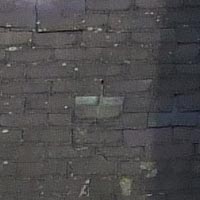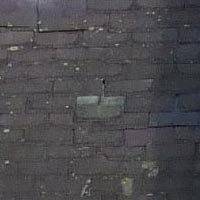Fujifilm Finepix F40fd Review
Review Date: October 18th 2007
Author: Mark Goldstein
Leave a comment about this Review
|
Image Quality
All of the sample images in this Review were taken using the 8 megapixel Fine JPEG setting, which gives an average image size of around 4Mb.
Noise
There are 5 ISO settings available on the Fujifilm Finepix F40fd which you can select at any time if the camera is in the normal shooting mode. There is virtually no discernible noise at the slowest settings of ISO 100 and 200, but noise and slight loss of detail is apparent at ISO 400, particularly in the shadow areas. At ISO 800 image quality has deteriorated quite a lot as the camera blurs detail to try and hide the noise, and ISO 1600 should really be avoided at all costs. Here are some 100% crops which show the noise levels for each ISO setting:
ISO 100 (100% Crop) |
ISO 200 (100% Crop) |
 |
 |
ISO 400 (100% Crop) |
ISO 800 (100% Crop) |
 |
 |
ISO 1600 (100% Crop) |
|
 |
|
Sharpening
Here are two 100% crops which have been Saved as Web - Quality 50 in Photoshop. The right-hand image has had some sharpening applied in Photoshop. The out-of-the camera images are fine at the default sharpening setting, with further sharpening in a program like Adobe Photoshop not really neccessary. Unfortunately you cannot change the in-camera sharpening levels, so you will always have to do some post-processing if you don't like the default results.
Original
(100% Crop)
|
Sharpened (100% Crop) |
 |
 |
 |
 |
File Quality
The Fujifilm Finepix F40fd has 2 different image quality settings available, with Superfine being the highest quality JPEG option. Here are some 100% crops which show the quality of the various options, with the file size shown in brackets.
|
8M
Fine (3.78Mb) (100% Crop)
|
8M
Normal (2.03Mb) (100% Crop)
|
 |
 |
Chromatic Aberrations
The Fujifilm Finepix F40fd suffered fairly badly from chromatic aberrations in areas of high contrast, as shown in the examples below, although it only occurred in over-exposed parts of the image.
|
Example
1 (100% Crop)
|
Example
2 (100% Crop)
|
 |
 |
Macro
The Fujifilm Finepix F40fd offers a Macro setting that allows you to focus on a subject that is 7cms away from the camera. The first image shows how close you can get to the subject in Macro mode (in this case a compact flash card). The second image is a 100% crop.
|
Macro Shot |
100% Crop |
 |
 |
Flash
The flash settings on the Fujifilm Finepix F40fd are Auto, Red-eye Reduction, Forced Flash, Suppressed Flash, and Slow Synchro. These shots of a white coloured wall were taken at a distance of 1.5m. There is noticeable vignetting at the wide-angle lens setting.
|
Flash Off - Wide Angle (36mm) |
Auto Flash - Wide Angle (36mm) |
 |
 |
|
Flash Off - Telephoto (108mm) |
Auto Flash - Telephoto (108mm) |
 |
 |
And here are some portrait shots. The Auto setting caused obvious red-eye, which the Red-eye reduction mode reduced to some extent, but didn't completely remove.
|
Auto |
Auto (100% Crop) |
 |
 |
|
Red-eye reduction |
Red-eye reduction (100% Crop) |
 |
 |
Night Shot
The Fujifilm Finepix F40fd's maximum shutter speed is 3 seconds, which is not very good news if you're seriously interested in night photography. The shot below was taken using a shutter speed of 1 second, aperture of f/2.8 at ISO 200. I've included a 100% Crop of the image to show what the quality is like.
|
Night Shot |
Night Shot (100% Crop) |
 |
 |
Overall Image Quality
The Fujifilm Finepix F40fd produced images of average quality during the review period. The 8 megapixel images are sharp enough straight out of the camera and don't require any further sharpening in an application like Adobe Photoshop. Unfortunately there are no in-camera sharpening options if you don't like the in-camera default results. The Fujifilm Finepix F40fd struggled with chromatic aberrations, with obvious purple fringing effects appearing in high contrast situations. Macro performance is below average, allowing you to focus as close as 7 cms away from the subject. The built-in flash worked well indoors with good overall exposure, but the F40fd did produce quite obvious red-eye, even when using the Red-eye Reduction flash setting. The night photograph was not great, with the maximum shutter speed of 3 seconds limiting the potential for creative night photography. The Fujifilm Finepix F40fd's has an extensive ISO range of 100-1600, but only ISO 100-400 is really usable, with lots of noise and blurring of detail at the higher ISO speeds of 800 and 1600.
|
![]() PhotographyBLOG
is a member of the DIWA
organisation. Our test results for the Fujifilm Finepix F40fd have been submitted to DIWA
for comparison with test results for different samples of
the same camera model supplied by other DIWA
member sites.
PhotographyBLOG
is a member of the DIWA
organisation. Our test results for the Fujifilm Finepix F40fd have been submitted to DIWA
for comparison with test results for different samples of
the same camera model supplied by other DIWA
member sites.
